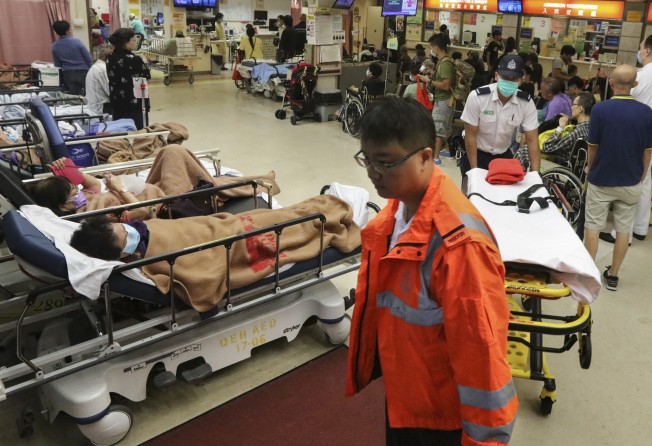Hong Kong’s predictable peak flu seasons do not have to trigger front-page headlines
Feng Chi-shun says better immunisation outreach, isolation wards and alternative boosts to medical manpower can beat the hospital ‘crises’

Twice a year, we have a crisis making the front-page news: that emergency rooms and medical wards in public hospitals are overwhelmed by flu patients.
A crisis is usually an unforeseen event wreaking havoc, but flu seasons are as predictable as taxes and death. Why is it then our government is never ready? Are the problems facing the Hospital Authority really insurmountable? Have they learnt anything from all the past flu seasons over the years?
We can do better with our flu immunisation.
Since community immunisation is effective only when a high percentage of citizens are inoculated, the vaccine should be free and readily available. Apart from wide publicity, mobile vaccination vehicles should go to all areas of our city instead of requiring people to make special trips to local outpatient clinics.

Cross-infection among patients in a closed area is a health hazard discovered in the 19th century, and our health-care professionals are still not doing enough to prevent it. During peak flu seasons, patients with flu symptoms must be segregated from the others. There should be a separate facility to screen flu patients, with a separate entrance, waiting area, and examination rooms.
If hospitalisation is needed, they should go to isolation wards. I advocate a separate wing for flu patients for each of the major public hospitals during peak flu seasons. Bunk beds in corridors and between existing beds is an abomination at any time, and unthinkable during a flu outbreak.
There is the perennial problem of manpower shortage, which is exacerbated during flu seasons. Hiring foreign doctors and nurses has been suggested and discussed to death, but flu patients waiting in the emergency room cannot hold their breath for that to happen.

Other alternatives can be explored. A readily available source is the batch of recently retired government and non-government doctors and nurses. The Hospital Authority should try to recruit them as a part-time flu season special team. They can be offered a nominal monthly pay, and report to training and rehearsal sessions. When required to work in outpatient departments or the wards to treat flu patients, they get full pay by the hour or the day. They work like firemen, trained and ready, and jump into action when a “crisis” hits.
Another manpower source worth looking into is medical staff in the Department of Health; many of them have important work to do, but this may not be urgent. They can be mobilised to serve as emergency flu doctors, a few weeks out of a year, without compromising their primary job.
How many more flu “crises” do we have to go through before they don’t make front-page news?
Dr Feng Chi-shun is an author and a retired pathologist